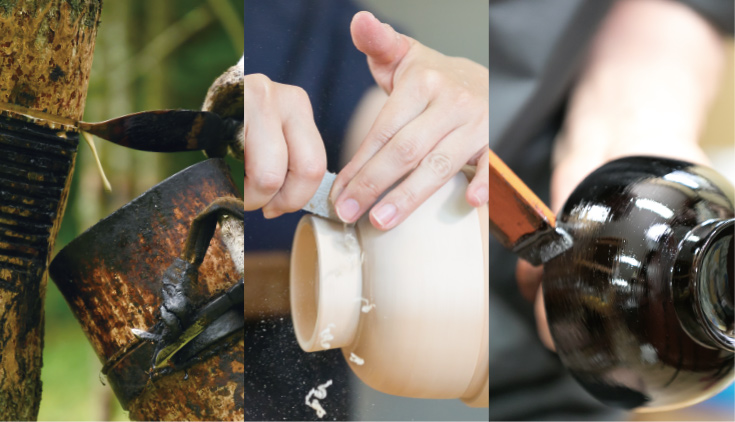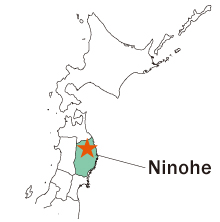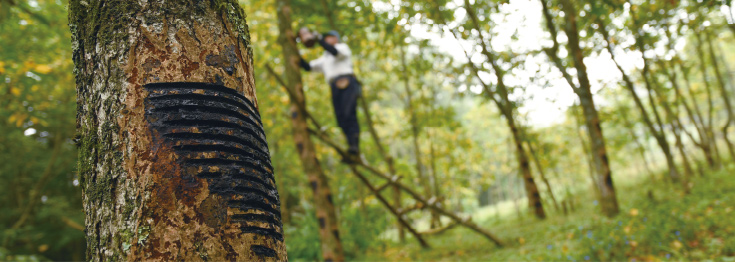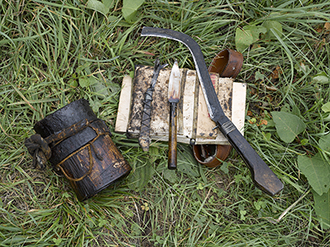niponica is a web magazine that introduces modern Japan to people all over the world.
2019 NO.25
Japan’s Decorative Art of Urushi

Japanese Handicrafts
- Craftsmen Who Create Shikki
Shikki - specialized production stages
Shikki go through multiple processes to become finished products: First, the urushi that will form coating is produced; then, the base for the object is created; and, finally, the base is coated with urushi. Most shikki is produced by means of a combination of individual specific processes carried out by artisans who are experts in one or other of those processes. Often, specialist artisans work together within a production area to complete a shikki item.
This article introduces the specialized handicrafts that come together to produce shikki and the regions of Japan that are best known for the respective processes.
Photographs: Urushi Industry Division, Ninohe City, Iwate Prefecture, Kanai Gen

Urushi-kaki (urushi-scraping)
Detailed work produces fine urushi

Joboji, Ninohe City, Iwate Prefecture
Urushi production area.
Urushi from Joboji is essential for repairing national treasures and important cultural properties. It has even been used in the restoration of such notable edifices as Nikko Toshogu Shrine and Kinkaku-ji Temple.
Ninohe City in Iwate Prefecture is well known as an area that produces Japanese urushi. It is also home to Japan’s largest community of urushi-kaki craftsmen.
Urushi-kaki craftsmen collect urushi to serve as coating material for shikki. Urushi-kaki is the process of horizontally slashing the bark of an urushi tree with an urushi-scraping plane and then using a scrape to collect the sap which accumulates through the tree’s efforts to heal the wounds. A single craftsman watches over as many as 400 trees a year and collects urushi from them.
Urushi-kaki is carried out from June through late October. In each season, the craftsmen identify and collect urushi with subtly different properties. This is because urushi dries differently and differs in content depending on when it is harvested. For example, urushi collected in June and July is moist but dries rapidly, making it suitable for lustering. The peak time of year for collecting urushi is August, when urushi of the highest quality with the maximum content of Urushiol (the main component of urushi) can be harvested as the summer climate makes urushi less moist. Urushi is collected about once every five days, depending on climatic and vegetative conditions, and on how well the tree appears to have recovered. In October, urushi-kaki ends with the scraping out of any remaining sap in the trees.
That is the basic method for collecting urushi, but it only enables collection of about 200 g per year from a single tree. In order to harvest a larger quantity and higher quality of urushi, the craftsman has to ascertain the state of a tree and decide where and how far apart to place the horizontal cuts.
After the harvested urushi is stirred to homogenize its ingredients, it goes through a process to evaporate out the moisture in order for it to become refined urushi. Then, it is delivered to urushi wholesalers who pass it on to the craftsmen who will apply the urushi as coating.

Urushi Trees being scraped for urushi. Just under 3% of the urushi used in Japan is harvested domestically with around 70% of that being Joboji urushi from Ninohe City in Iwate Prefecture.

The urushi-kaki craftsmen collect the urushi as soon as the cut is made because urushi has property of becoming hard when exposed to the air.






